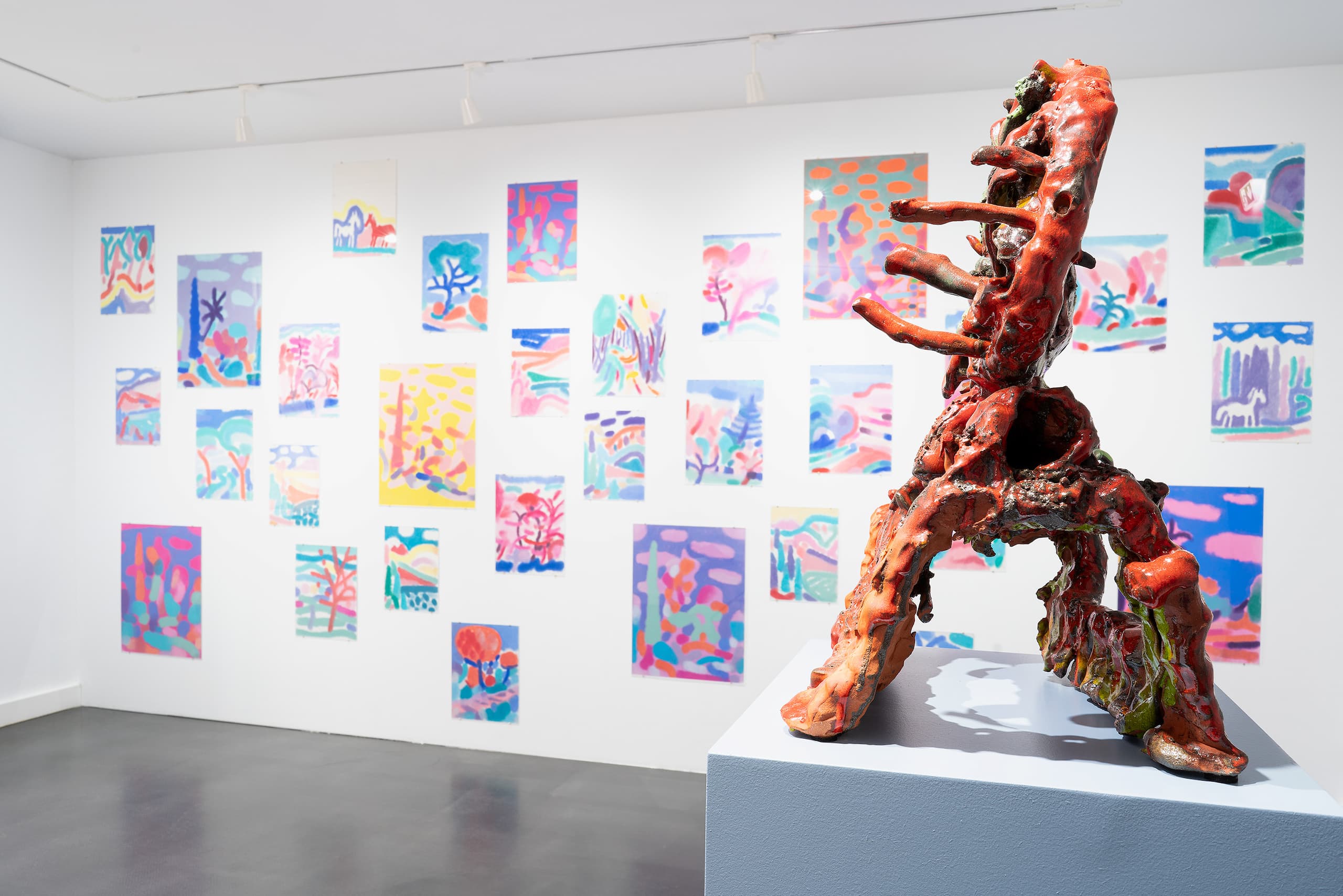
Blick über die Havel auf die 1831-1834 nach Entwürfen von Schinkel errichtete Brücke aus Backstein; sie ersetzte die vormalige Holzbrücke und wurde dann selbst 1908 durch eine Eisenkonstruktion ersetzt; links von der Brücke die Groß Neugierde, das Kasino und das Hofgärtner- und Maschinenhaus. Aufnahme nach einem Gemälde von Franz Xaver Sandmann - ohne Jahr © ullstein bild - Michael Herrmann
The construction of Villa Schöningen
The history of Villa Schöningen starts in 1843: the Potsdam-born architect Ludwig Persius (1803–1845) designs the Villa on behalf of Kurd Wolfgang von Schöning (1789–1859), the Major general of Prince Carl of Prussia (1801–1883). The Italian style villa was subsequently built next to the Glienicker Bridge, overlooking the castles of Glienicke and Babelsberg. The new building replaced a simple skipper’s house that had been built on the site seventeen years earlier. The Villa was named after the town Schöningen, the point of origin of Major general Kurd von Schöning’s family. After his death in 1859, his children sold the Villa to Prince Carl of Prussia.
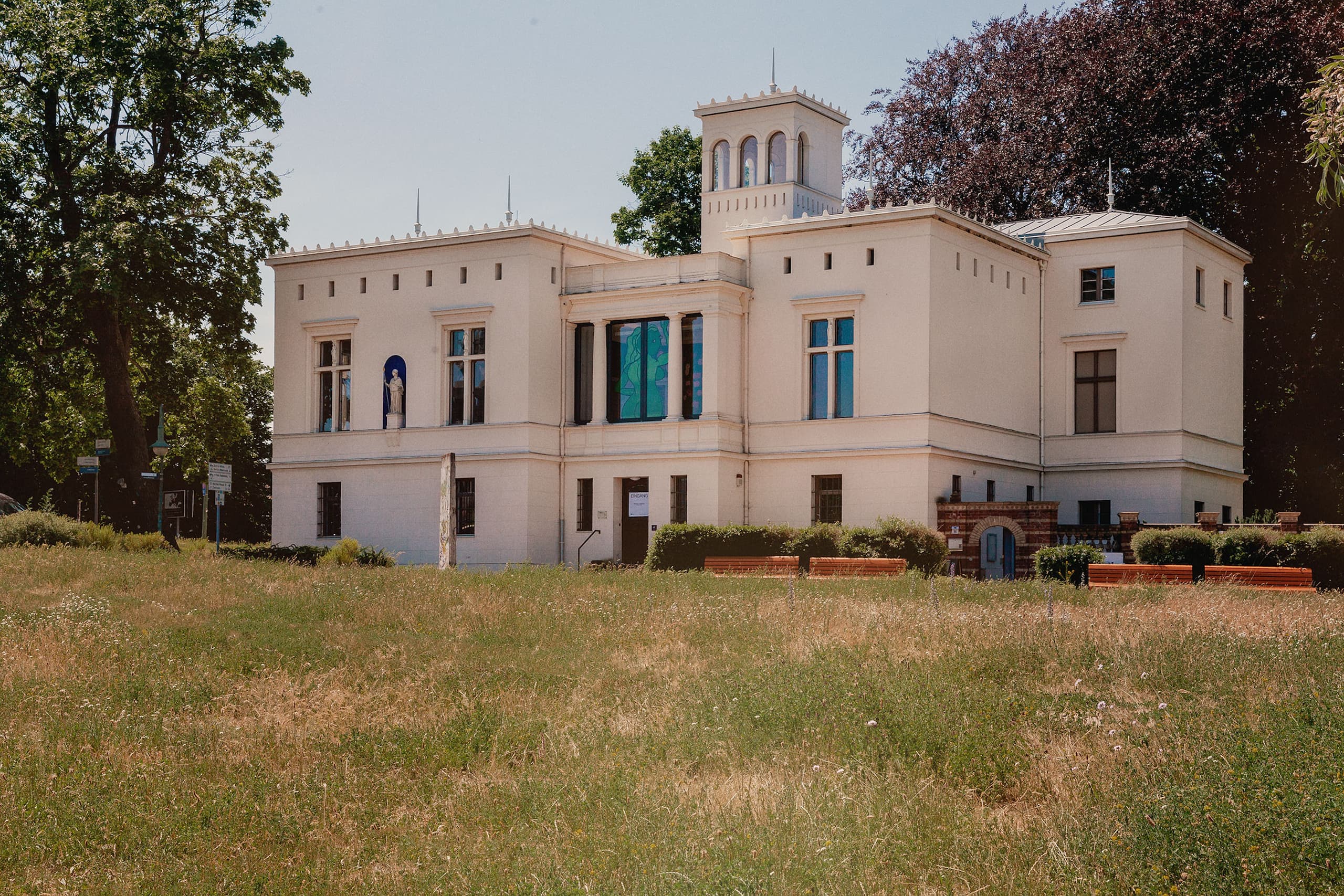
© Villa Schöningen, Foto: Aimee Shirley, 2023.
Family Wallich and Villa Schöningen
In 1871 Moritz Jacoby bought the Villa Schöningen and handed it to his daughter Anna (1854–1925) in 1878. Anna and her husband Hermann Wallich (1833–1928), who was a banker and one of the first directors of Deutsche Bank, resided in Berlin and used the Villa mostly as a summer residence.
Their oldest son, Paul Wallich (1882–1938), subsequently moved into the Villa with his family. Due to the rising threat of the Nazi Party the Jewish Paul Wallich committed suicide in 1938. By that time his children had already emigrated and one year later his wife also moved abroad. None of the Wallich family members returned to Germany after the period of the Third Reich. After the Second World War, in 1945 the Villa was occupied by the soviet Red Army and used as a military hospital for wounded Russian soldiers.

Agentenaustausch an der Glienicker Bruecke bei Berlin: Fahrzeugkonvoi, angeführt von einem westdeutschen Polizeiwagen, fährt von der Glienicker Brücke in den westlichen Teil der Stadt. Austausch mehrere Agenten, u.a. Anatoil Schtscharanski (Sharanky) © ullstein bild - Röhrbein
Villa Schöningen during GDR
In the post-war period and under the new GDR government the Free German Trade Union Federation (FDGB) quartered their offices and a day care center (Kinderwochenheim) in the Villa.
The inner German Border, built in 1961, ran directly next to the Villa Schöningen, The Villa was, hence, located right in the border area of the GDR, the so-called death strip (Todesstreifen) – the land near the border, which was heavily secured by military personnel. After the reunification in November 1989, the Berlin Wall was demolished and the border area around the Villa disappeared.

Villa Schöningen an der Glienicker Brücke, 1843 für Kurd Baron von Schöningen, Hofmarschall des Prinzen Carl von Preussen, durch den Architekten Ludwig Persius errichtet - Juli 1995 © ullstein bild - Dietmar Horn
What happened after the fall of the wall?
The Villa remained a day care until 1993. One year later, through the initiative of the government of Potsdam, the Villa was given back to the Wallich family who sold it three years later. In 1999 the last inhabitant of the Villa moved out. In the following years, the house was increasingly neglected. Plans were made to demolish the Villa altogether and to build new houses on the property. Due to the historic value of the Villa and its garden, however, the plans did not materialize. In 2007 Mathias Döpfner and Leonhard Fischer bought the Villa and rebuilt it in accordance with German cultural heritage requirements.
In 2009 the new owners Mathias Döpfner and Leonhard Fischer opened the Villa Schöningen as an exhibition venue. Since 1977 the Villa Schöningen has been included in the Heritage List of the State of Brandenburg and since 1996 it has been part of the Berlin-Potsdam’s UNESCO World Heritage site.
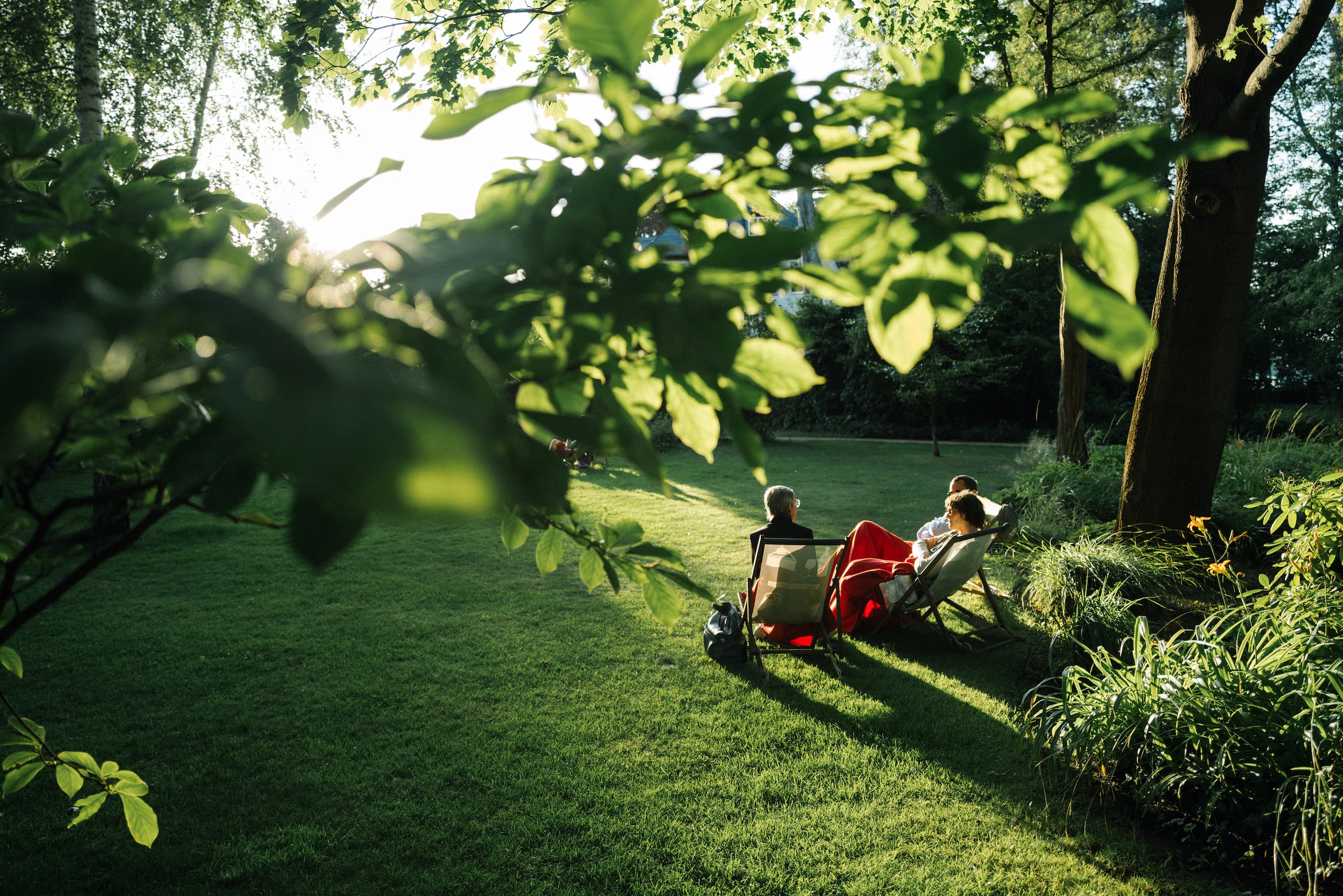
© Villa Schöningen, Foto: Carsten Beier
The garden of Villa Schöningen
After Frederick William IV (1795–1861) took office in 1840, the landscape architect Peter Joseph Lenné (1789–1866) received an extensive commission to refine the landscape of Potsdam.
Included in the planning are all buildings that stand on the banks of the Havel or on the connecting paths between the royal gardens.
As part of these measures, the garden of Villa Schöningen is also planned and laid out by Peter-Joseph Lenné, together with his former student Gustav Meyer (1816–1877).
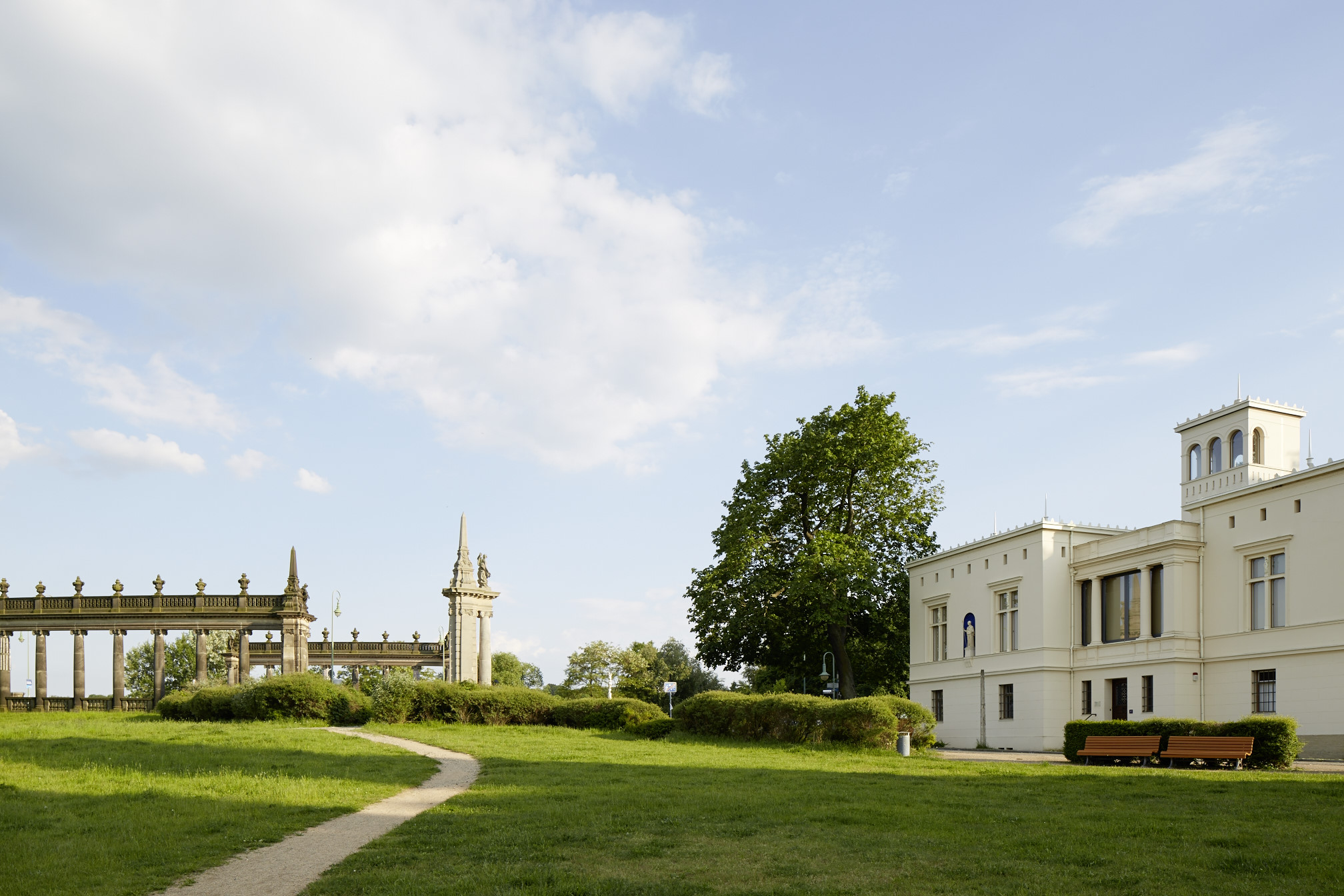
© Villa Schöningen, Foto: Noshe, 2023.
The cultural landmarks of prussia
The Prussians built a wealth of cultural landmarks, particularly buildings and parks in Potsdam, which were realised from 1730 to 1916 and comprise a total of 500 hectares of parks and 150 buildings. The Villa fits well into these landmarks: Frederick the Great (1712–1786) pioneered the idea of a landscape consisting of cultural landmarks. He famously initiated the construction of Schloss Sanssouci in 1745. Friedrich Wilhelm IV (1785–1861), whose bust can be seen in the staircase of the Villa, significantly expanded the cultural landscape of Potsdam. He commissioned major architects of his time, such as Karl Friedrich Schinkel (1781–1841), Ludwig Persius (1803–1845), Christian Daniel Rauch (1777–1857), Friedrich August Stüler (1800–1865) and the landscape architects Peter Joseph Lenné (1789–1866) and Hermann von Pückler-Muskau (1785–1871), to create a holistic ensemble of architecture and landscape. Friedrich Wilhelm IV and the architects were inspired by ancient Greek and Renaissance architecture. Ludwig Persius – the architect of the Villa – erected, as well, the Heilandskirche (Church of St. Saviour) in Sacrow, which is influenced by the San Clemente Basilica in Rome, as well as the New Orangery in Sanssouci Park, which was built in the style of the Villa Medici in Rome and the Uffizi Gallery in Florence. The buildings were always meant to stand in close connection to one another, being connected with so-called sightlines.
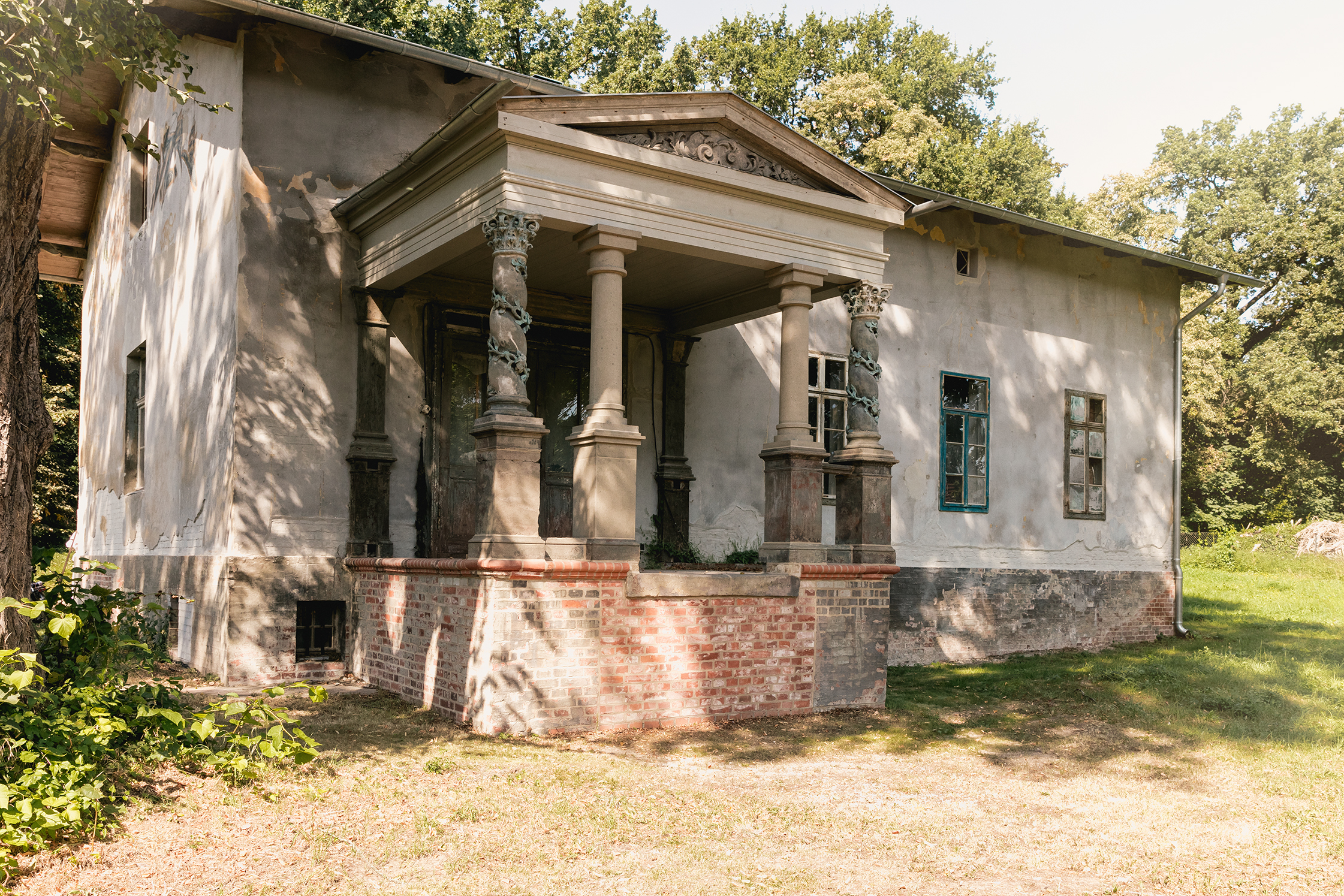
© Villa Schöningen, Foto: Aimee Shirley, 2023.
History of Villa Schlieffen
The Villa Schlieffen is a villa located on the eastern side of Pfingstberg in Potsdam. It forms a structural ensemble with Villa Henckel, Villa Quandt, and Villa Lepsius and is part of the UNESCO World Heritage Site. The villa was built between 1848 and 1869, following the tradition of older wine steward houses. Until 1869, a tea and viewing pavilion was also associated with the building, but through changes in ownership, it later became part of the neighboring Villa Henckel’s property.
In 1879, the Villa Schlieffen became the property of the Hohenzollern family. It wasn’t until 1903 that the villa became known by its current name because the Schlieffen noble family lived there from that time until 1932.
There is no recorded history of what happened to Villa Schlieffen during the National Socialist era. After World War II in 1945, the building was seized by the Soviet Army. Extensive modifications were made during this confiscation, including the installation of double doors and sports equipment, which are still present today. Subsequently, the Villa Schlieffen was used for Soviet military purposes, and it underwent partial conversion into a shooting bunker. The Red Army soldiers conducted shooting exercises in the cellar rooms of the building.
Since 1994, the Villa Schlieffen had been completely vacant and, due to its dilapidated condition, inaccessible to the public. In 1996, the Prussian Palaces and Gardens Foundation took over the building. To prevent further deterioration, the Villa had been clad since the 2000s. In 2014, Mathias Döpfner obtained a right of use for Villa Henckel, Villa Schlieffen, and parts of Pfingstberg. A condition of this usage is the partial opening of the park and Villa Schlieffen to the public and the independent maintenance and restoration of these places.
The Villa Schlieffen was subsequently restored under historical preservation conditions. The entire building was preserved using the unique in-situ method. Some ceiling parts were removed due to fungal infestation, and in the process, the historic path to the villa was also uncovered. During the extensive renovation, items such as cartridge cases, gas masks, and Russian-made liquor bottles were discovered. Additionally, an iron footbridge was retrofitted because the structural engineers did not approve new ceilings between the basement and ground floor.
Since 2023, Villa Schlieffen has once again been accessible to visitors and can be viewed in the condition left by the Soviet military. The upper rooms are not accessible because they are small spaces, and the staircase has not been granted permission for visitor access due to the absence of escape routes. A portion of the Döpfner Collection is also on display in Villa Schlieffen and accessible to the public. There will be changing installations from the Döpfner Collection in Villa Schlieffen in the future.
A guided tour to Villa Schlieffen is offered monthly on weekends and by appointment at info@villa-schoeningen.de.
